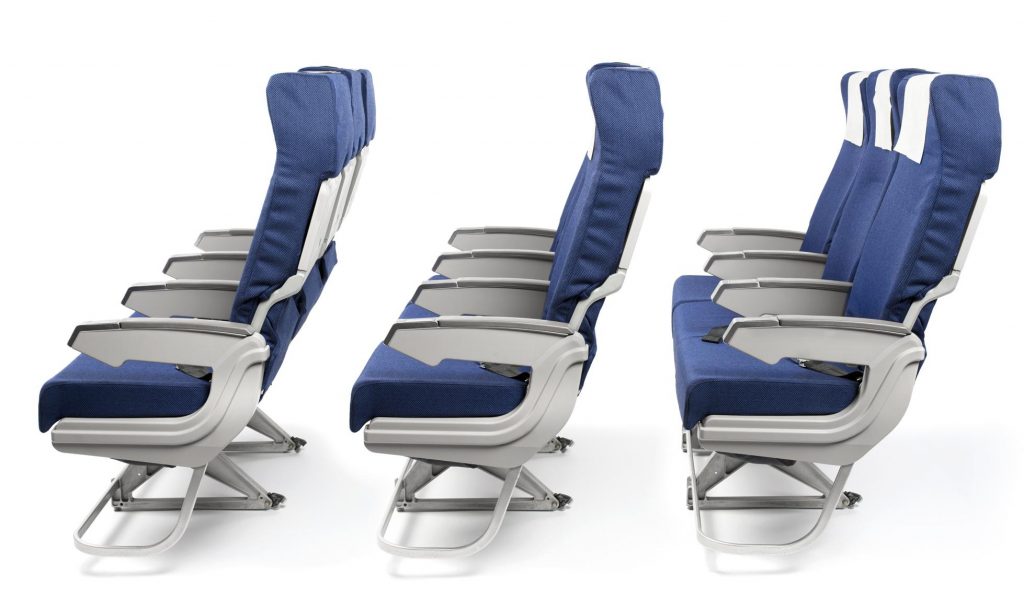In a ruling seemingly based on semantics, a U.S. appeals court on Friday refused to order the Federal Aviation Administration (FAA) to adopt minimum requirements for the size and pitch of airline seats.
Over the past half-century, the average American adult has become a couple of inches taller, a half-dozen inches wider and more than 30 pounds heavier, while plane seats have become significantly narrower and more tightly packed.
Yet, despite the clamoring of the public and consumer-rights groups, the Federal Aviation Authority (FAA) has been loath to interfere in the airlines business model so long as passengers are able to evacuate an aircraft in 90 seconds.
Friday’s ruling by the D.C. Circuit Court of Appeals hinged on language in the FAA Reauthorization Act of 2018, which gave the agency one year to come up with minimum seat standards. Five years later, he public is still waiting.
The court’s decision largely came down to the interpretation of a conjunction. The law reads: “Administration shall issue regulations that establish minimum dimensions for passenger seats on aircraft … and that are necessary for the safety of passengers.”
That word ‘and’ makes all the legal difference, said the three-judge panel. “Unless seatsize regulations are ‘necessary for the safety of passengers,’ the FAA Reauthorization Act neither requires nor even authorizes the FAA to ‘establish minimum dimensions for passenger seats on aircraft,’” wrote Circuit Judge Justin Reed Walker in the court’s opinion.
Moreover, the court maintained that FlyersRights.org, a passenger advocacy group, had not proven that shrinking, tightly packed seats have negatively impacted safety on airplanes.
“It’s not as if the FAA is refusing to look for that evidence,” according to the opinion. “It has run emergency-exit tests, and it has reviewed nearly 300 real-world exits. But each time, there is little to ‘no discernable difference in evacuation times due to seat dimensions.’”
But there is a big problem with how the FAA conducts safety simulations, according to U.S. Senator Tammy Duckworth (D-Ill.). “The testing conditions were completely unrealistic,” Duckworth told Forbes in December.
The senator pointed out that the FAA’s simulations were conducted with half-empty planes and passengers who were all able-bodied and under age 60. There were no children needing to be extracted from car seats. No senior citizens with bad knees. Nobody with disabilities. Nobody who didn’t speak English. No obstacles like luggage or charging cords to trip over. Definitely not what the court deemed “real-world exits.”
Last December, Duckworth introduced legislation that calls on the FAA to be more transparent. “Evacuation standards need to do a better job of taking real life conditions into account to ensure all types of passengers can safely evacuate in an emergency,” according to Duckworth’s Emergency Vacating of Aircraft Cabin (EVAC) Act, which has the support of dozens of impacted groups, including the nation’s largest pilots’ and flight attendants’ unions; organizations representing retired people, children and disabled persons; as well as “Miracle on the Hudson” hero Captain Chesley “Sully” Sullenberger.
The flying public will also likely take issue with the ruling. In August, when the FAA opened the topic for 90 days of public commentary on the issue of airplane seat size, it got quite an earful.
More than 26,000 messages from travelers flooded in, with a whopping 3,708 comments mentioning the word “uncomfortable,” topping “cramped” (1,842), “tight” (1,203), “crammed” (1,100), “squeezed” (1,100) and “squished” (260). Folks described flying as “miserable” (381), “terrible” (217) “horrible” (206) and “awful” (104). The word “torture” appears in 193 comments.
And given the FAA’s focus on safety, it is telling that so many of the public comments mention “safety” (6,266) along with “evacuation” (5,109), “unsafe” (1,199), “stuck” (445) and “trapped” (403).
The FAA declined to comment on Friday’s ruling, but tells Forbes that it “is reviewing the thousands of comments it received on whether current seat size and spacing affect passenger evacuation.”

